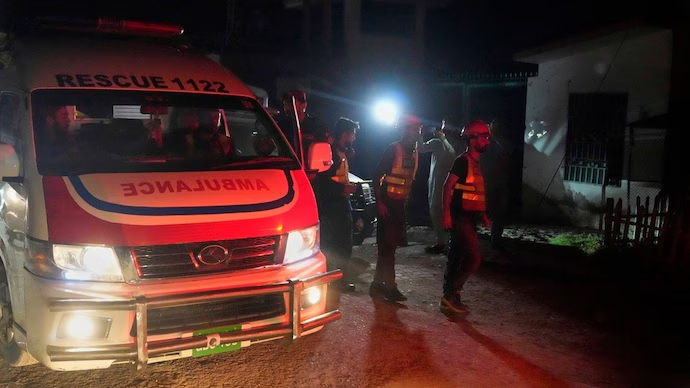In a world full of conflict and uncertainty, some stories stand out for their courage and humanity. One such story is Operation Sindoor, India’s recent mission to rescue its citizens from war-torn Sudan. This powerful operation reflects India’s growing strength in global diplomacy and its deep commitment to protecting its people—no matter where they are.
A Race Against Time in a War Zone
Sudan has been in a state of emergency due to a violent power struggle between its military forces and a rival paramilitary group. The ongoing civil war created chaos in the capital city, Khartoum, with airstrikes, gunfire, and explosions affecting civilians day and night. Indian nationals, including students, workers, and families, found themselves caught in the crossfire, desperate for help and unsure if they would ever make it home.
The Indian government, keeping a close eye on the situation, knew it had to act fast. Thousands of lives were at risk, and waiting any longer would mean putting more lives in danger.

Operation Sindoor Begins
Launched in April 2025, Operation Sindoor was named after the traditional red powder used in Indian culture to symbolize safety, protection, and blessings. The name itself reflects the mission’s goal—to ensure the safe return of Indian citizens from a dangerous foreign land.

Under the leadership of the Ministry of External Affairs and the Indian Armed Forces, this large-scale operation required precise coordination. The Indian Embassy in Sudan quickly began collecting data on all Indian nationals in the country and sent out emergency contact numbers for those seeking evacuation.
Indian Forces Show Strength and Strategy
India used both air and sea routes for the rescue mission. The Indian Air Force (IAF) flew special aircraft into Sudan’s conflict zones, sometimes under the threat of enemy fire. Meanwhile, the Indian Navy’s warship INS Sumedha was stationed at Port Sudan, waiting to take evacuees to safer territories.
Several Indian Air Force C-130J aircraft were used in the rescue efforts. These planes flew in and out of Sudan during short windows of ceasefire, landing under high-pressure conditions. Brave pilots, skilled navigators, and support staff worked long hours to bring everyone home safely.
Hundreds Brought to Safety
Over 3,000 Indian citizens were successfully rescued during Operation Sindoor. Among them were students who had gone to Sudan to study medicine, professionals working in industries like oil and infrastructure, and women and children trapped in cities under attack. Many were hiding in basements for days with no electricity, food, or water.
Some of the most emotional moments came when parents were reunited with their children, or when elderly citizens stepped off the aircraft onto Indian soil with tears of relief and gratitude. Their faces told the story of fear, survival, and the comfort of being home.
The Global Community Applauds
India’s efforts didn’t go unnoticed. The United Nations and other global organizations praised the country’s quick response and humanitarian approach. In fact, India’s rescue efforts also extended to foreign nationals from Nepal, Sri Lanka, and Bangladesh who were stranded in Sudan. They were given shelter and support until they could return to their own countries.
This move was appreciated worldwide and showed that India’s global image is one of a responsible and caring nation—ready to help not only its own people but others in need as well.

What Operation Sindoor Means for India’s Future
Operation Sindoor is more than just a rescue mission. It is a symbol of India’s growing global presence and its dedication to the safety of its citizens, wherever they may be. The mission has proven that India can handle emergency situations with precision, courage, and compassion.
It also highlights the importance of having a strong network of embassies, armed forces, and diplomatic channels that can be activated quickly during crises. India has already carried out several successful evacuation missions in the past, including Operation Ganga in Ukraine and Operation Kaveri in Sudan (earlier). Operation Sindoor adds yet another chapter to this proud history.
Voices From the Ground
Many evacuees have come forward to share their stories of survival and gratitude. One medical student recalled hiding in her university dormitory without food for five days before being rescued. Another worker said he could not believe it when he saw the Indian flag on the aircraft—“It felt like seeing light after a long dark tunnel,” he said.
Parents who had been waiting for news of their children spoke about sleepless nights and constant worry. For them, Operation Sindoor was not just a mission—it was a miracle.
Government’s Message to the People
After the successful operation, Indian leaders emphasized the government’s commitment to protecting every Indian life abroad. Foreign Minister Dr. S. Jaishankar thanked the armed forces, pilots, embassy staff, and volunteers who made the mission possible.
He also reminded citizens that registering with embassies when traveling or working abroad is crucial for quick assistance during emergencies. The government continues to build new technologies and platforms to improve crisis response times and reach more people faster.
Final Thoughts: A Nation That Cares
Operation Sindoor will be remembered as one of India’s bravest humanitarian missions. It’s a reminder that in times of crisis, unity, leadership, and humanity shine brightest. While the world watches global powers clash, India has once again chosen to lead through compassion and action.
This mission has not only saved lives but also inspired hope. As India continues to grow stronger on the world stage, it carries with it the spirit of service, duty, and love for its people—no matter where they are.
Also read: UAE Scores Big Victory Before World Cup Qualifiers Begin













